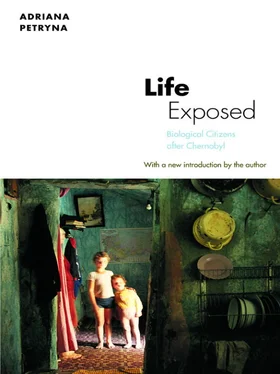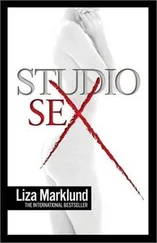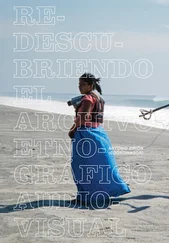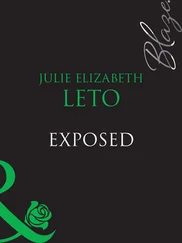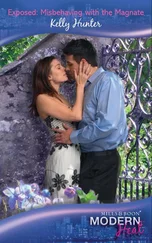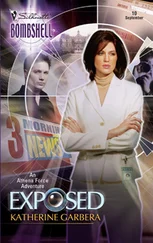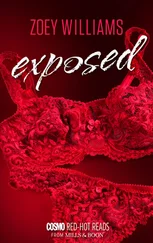–––––. 1996. “Ten Years of the Chernobyl Era.” Scientific American, April, 45–49.
Sich, Alexander. 1993. “The Chernobyl Accident Revisited: Source Term Analysis and Reconstruction of Events during the Active Phase.” Ph.D. diss., Massachusetts Institute of Technology.
–––––. 1996. “The Denial Syndrome.” Bulletin of Atomic Scientists 52, no. 3:38–40.
Slezkine, Yuri. 1994. “The USSR as a Communal Apartment, or How a Socialist State Promoted Ethnic Particularism.” Slavic Review 53, no. 2:414–452.
Slobin, Dan, ed. 1966. Soviet Psychology and Psychiatry 4, nos. 3–4.
Solchanyk, Roman. 1992. Introduction to Ukraine: From Chernobyl to Sovereignty, edited by R. Solchanyk, i-xiii. New York: St. Martin’s Press.
“Some Material for a Campaign in Support of Radiation Sciences.” 1996. Radiation Research 145, nos. 1–2:1.
Steele, Jenny. 1995. “Remedies and Remediation: Foundational Issues in Environmental Liability.” Modern Law Review 58, no. 5:615–636.
Stone, Richard. 2001. “Living in the Shadow of Chernobyl.” Science 292, no. 5376:420–424.
Strathern, Marilyn. 1993. “Environments Within: An Ethnographic Commentary on Scale.” In The Linacre Lectures-. 1–23. Linacre College, Oxford.
Straume, T., et al. 1993. “Validation Studies for Monitoring of Workers Using Molecular Cytogenetics.” In Biomarkers and Occupational Health: Progress and Perspectives, edited by M. Mendelsohn, J. Peeter, and M. Normandy, 174–193. Washington DC: Academic Press.
Subtelny, Orest. 1988. Ukraine: A History. Toronto: University of Toronto Press.
–––––. 1994. Russocentrism, Regionalism, and the Political Culture of Ukraine. Washington, DC, and College Park, MD: University of Maryland at College Park.
Taussig, Michael. 1987. Shamanism, Colonialism, and the Wild Man: A Study in Terror and Healing. Chicago: University of Chicago Press.
–––––. 1993. “The Public Secret.” Lecture, February. University of California at Berkeley.
–––––. 1999. Defacement: Public Secrecy and the Labor of the Negative. Stanford: Stanford University Press.
Teague, Elizabeth. 1988. Solidarity and the Soviet Worker. London: Croom Helm.
Todes, Daniel. 1997. “From the Machine to the Ghost Within: Pavlov’s Transition from Digestive Physiology to Conditional Reflexes.” American Psychologist 52, no. 9:947–955.
Todeschini, Maya. 1999. “Illegitimate Sufferers: A-Bomb Victims, Medical Science, and the Government.” Daedalus 128, no. 2:67–101.
Torbakov, Igor. 2001. “Ukraine: Vagaries of the Post-Soviet Transition,” Demo kratizatsiya 8, no. 4:461–470.
Trosko, J. 1993. “Biomarkers for Low-Level Exposure Causing Epigenetic Responses in Stem Cells.” Stem Cells 13:231–239.
Turner, Bryan. 1987. Medical Power and Social Knowledge. London: Sage.
Ukraine Human Development Report. 1995. Kyiv: Blitz-Inform Press.
Ukrainskyi Blahodiinyi Soyuz Spilok Sotstiial’noho Zakhystu Invalidiv Chornobylia. 1994. “Analiz, Sotsiial’no-Ekonomichnykh Ta Pravovykh Aspektiv Stanovyshcha Invalidiv—Likvidatoriv Chornobyl’skoi Katastrofy.” Draft manuscript, Kyiv.
UNESCO. 1996. Living in a Contaminated Area. Geneva: Chernobyl Programme.
UNSCEAR (United Nations Scientific Committee on the Effects of Atomic Radiation). 2000. UNSCEAR 2000 Report to the General Assembly with Scientific Annexes. New York.
USSR State Committee on the Utilization of Atomic Energy. 1986. The Accident at Chernobyl Nuclear Power Plant and Its Consequences. Information compiled for the IAEA Experts’ Meeting, August 25–29, 1986, Vienna. Working Document for the Post-Accident Review Meeting.
Verdery, Katherine. 1996. What Was Socialism, and What Comes Next? Princeton: Princeton University Press.
Volkov, Vadim. 2000. “The Concept of Kul’turnost’: Notes on the Stalinist Civilizing Process.” In Stalinism: New Directions, edited by Sheila Fitzpatrick, 210–230. London: Routledge.
Von Hippel, Frank. 1991. Citizen Scientist. New York: American Institute of Physics.
–––––. 2000. “ ‘Radiation Risk and Ethics’: Health Hazards, Prevention Costs, and Radiophobia.” Physics Today, April, 11.
Vynnychenko, Volodymyr. 1920. Vidrodzhennia Natsii, 1:258. Vienna.
Wagemaker, E., et al. 1996. “Clinically Observed Effects.” IAEA Bulletin 3:29–33.
Wanner, Catherine. 1998. Burden of Dreams: History and Identity in Post-Soviet Ukraine. Pennsylvania State University Press.
Ware, Norma. 1998. “Sociosomatics and Illness Course in Chronic Fatigue Syndrome.” Psychosomatic Medicine 60:394–402.
Weber, Max. 1946. “Science as a Vocation.” In From Max Weber: Essays in Sociology, translated, edited, and with an introduction by H. H. Gerth and C. Wright Mills, 129–156. New York: Oxford University Press.
Wells, Harry. 1960. Sigmund Freud: A Pavlovian Critique. New York: International Publishers.
White, Hayden. 1973. Metahistory: The Historical Imagination in Nineteenth-Century Europe. Baltimore: Johns Hopkins University Press.
Whitehead, Alfred North. 1926. Science and the Modern World. New York: Pelican.
WHO (World Health Organization). 1996. Health Consequences of the Chernobyl Accident. Results of the IPHECA Pilot Projects and Related National Programmes. Geneva.
World Bank. 1993. Ukraine: The Social Sectors in Transition. Washington, DC.
–––––. 1996. Poverty in Ukraine. Report No. 15602-UA, Kyiv.
Yalow, R. 1993. “Concern with Low-Level Ionizing Radiation.” Mayo Clinic Proceedings 69:436–440.
Yamazaki, James N., and William J. Schull. 1990. “Perinatal Loss and Neurological Abnormalities among Children of the Atomic Bomb: Nagasaki and Hiroshima Revisited, 1949 to 1989.” Journal of the American Medical Association 264, no. 5:605–610.
Young, Allan. 1995. The Harmony of Illusions: Inventing Post-Traumatic Stress Disorder. Princeton: Princeton University Press.
Zenkov, L. P., and M. A. Roikin. 1991. Funktsional’naia Diagnostika Nervnikh Boleznei. Moscow: Meditsina.
abortion, 71, 72, 74, 229n.9
alcoholism, 112, 232n.34
Alina, 80–81
ambivalence, 235n.5
Anatolii ( Friend of the Deceased character), 208–9
Anspaugh, L. R., 53–54, 55
Anton: cost of social reconciliation to, 208–9; delusional imagery suffered by, 202–3; domestic abuse by, 195, 203, 210–12; Halia leaves, 212–14; life history recorded by, 194–96; lifetime disability status given to, 214; on Little Halia and dead bird, 207–8; pre-Chernobyl life of, 197–99; transformation of into medicalized self, 201–6; transition of self/social identity of, 191–201
ARAC (Atmospheric Release Advisory Capability) [LLNL], 36, 37
ARS (Acute Radiation Sickness): and assessment of patients airlifted from site of disaster, 40–41; injuries combined with, 41; Institute of Biophysics research on, 39; series of syndromes characteristic of, 40; similarities between VvD symptoms and, 123, 124–26; statement regarding no new cases of, 48; symptoms of, 233n.9. See also irradiation; radiation dose exposure
asylums, 175
atomic neurosis ( hibakusha ), 160
Babi Yar massacre site (World War II), 123–24
baiky (fairy tales), 77
Baranov, Aleksandr, 39
Baranovs’ka, Natalia, 96
Читать дальше
